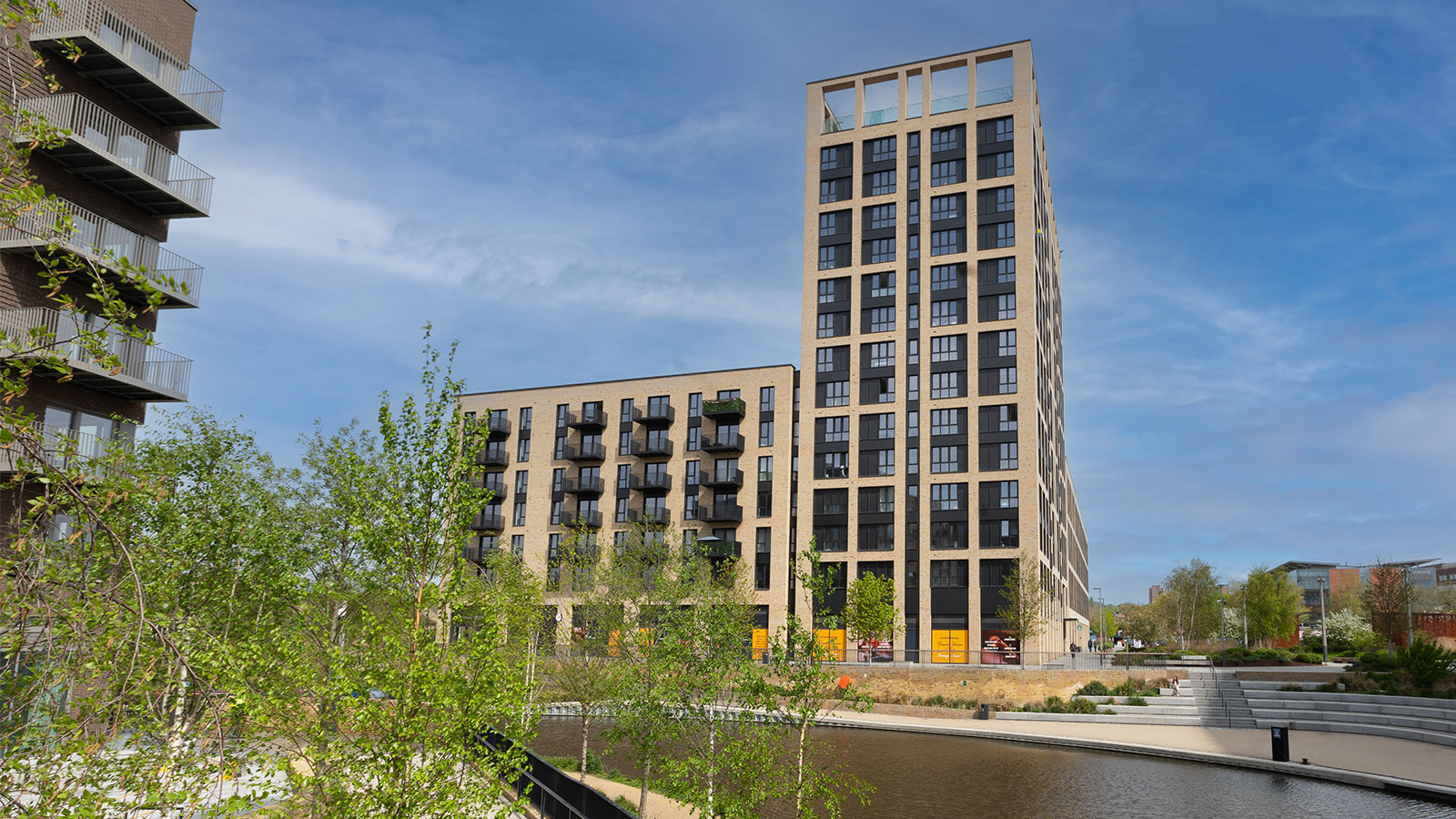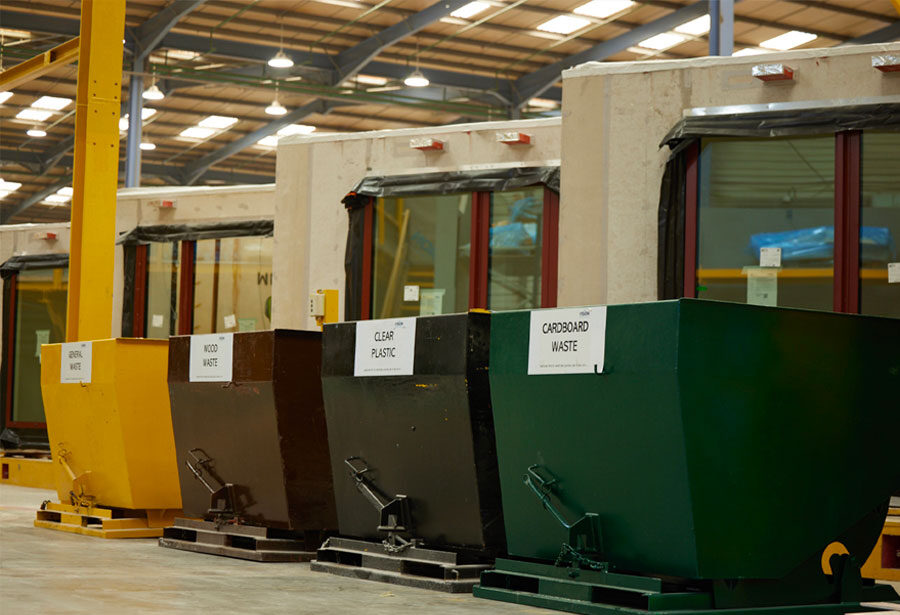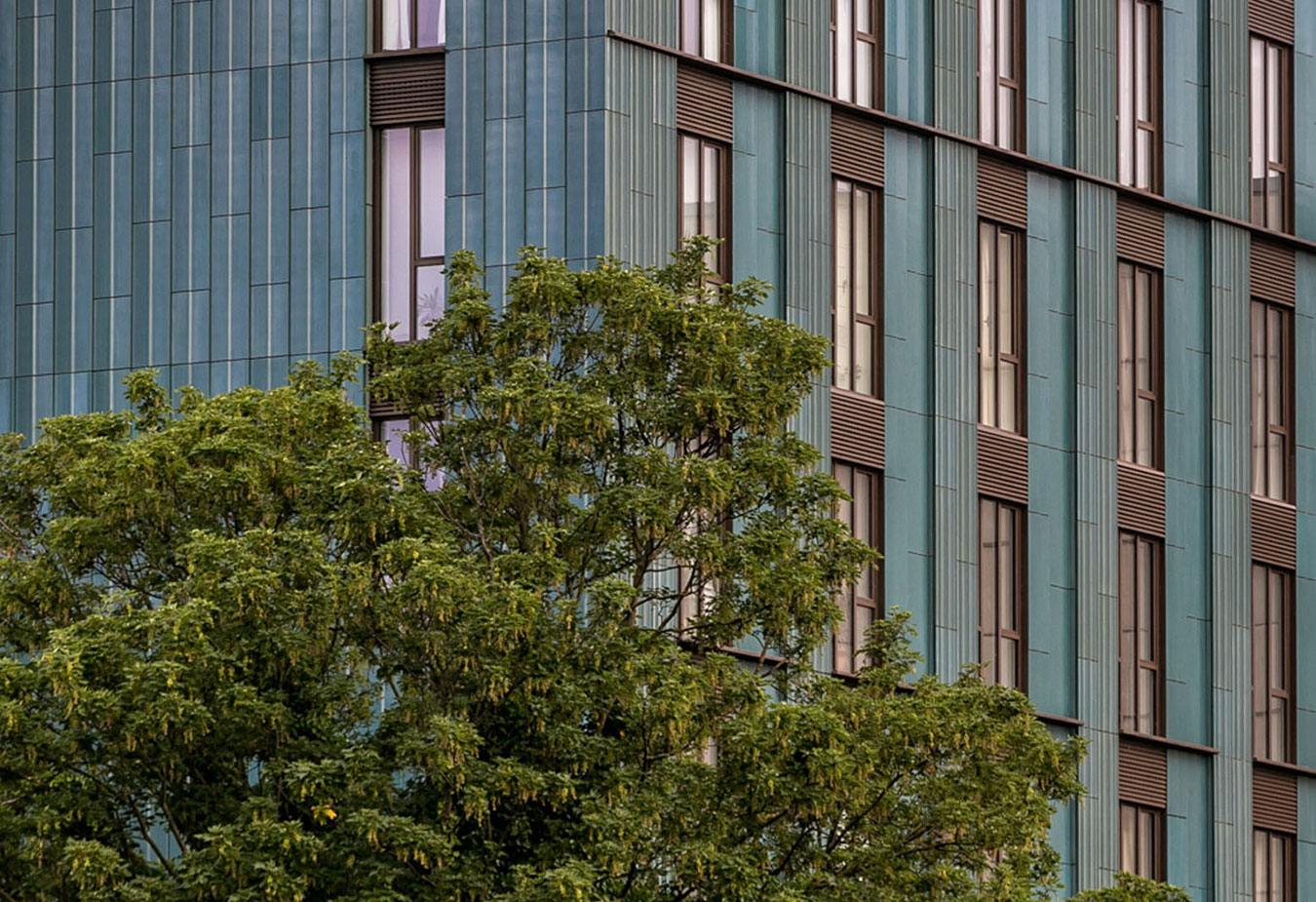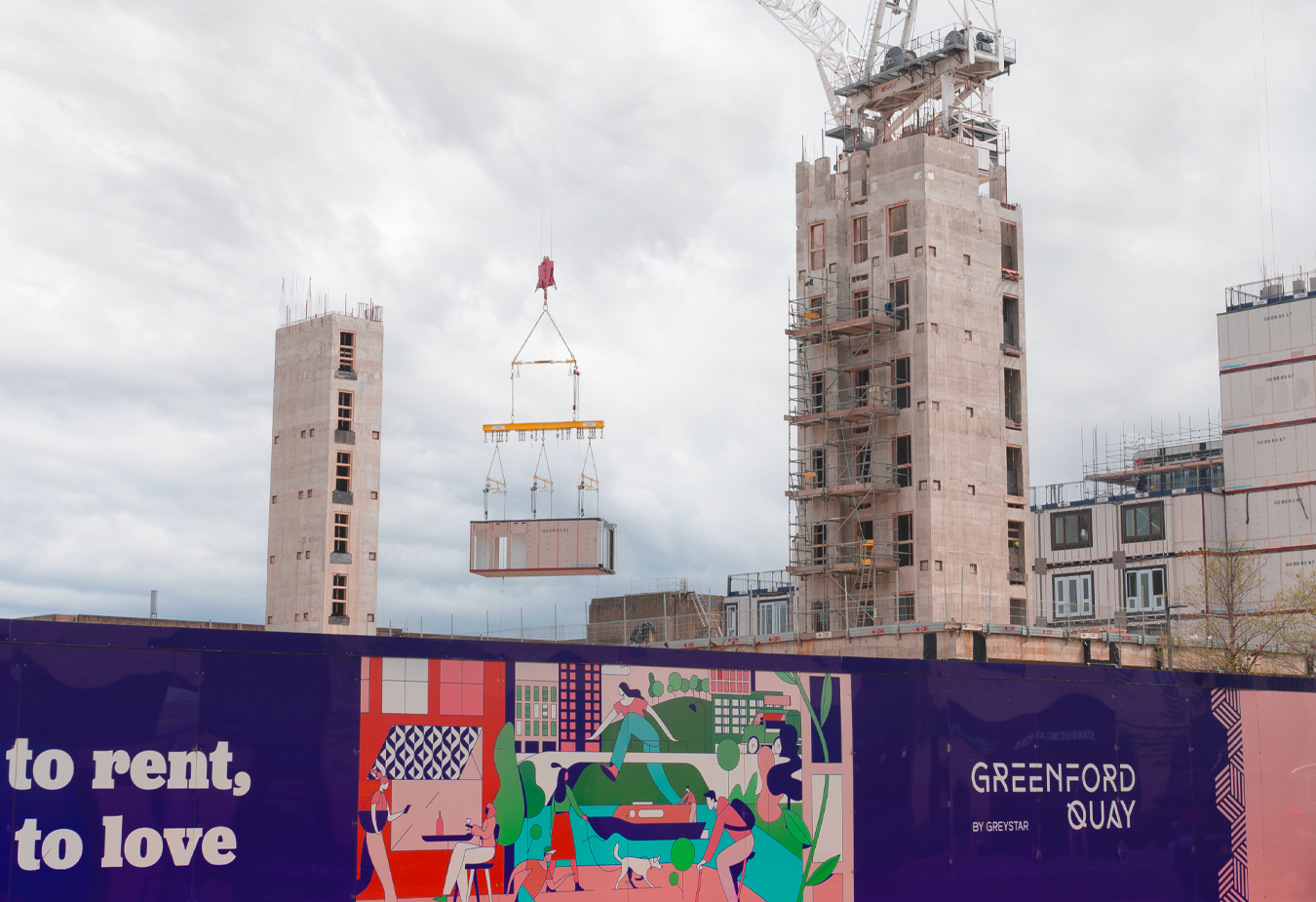
Environmental sustainability is integral to everything we do. Our holistic, whole life approach encompasses areas such as materials selection, transport, energy use, resource efficiency and biodiversity. Through responsible sourcing and volumetric delivery, our construction projects optimise efficiencies, drastically cut waste and reduce embodied and other indirect carbon emissions. In operation, stringent thermal standards and renewable and passive measures help us to achieve top energy ratings. The buildings we deliver are truly environmental exemplars.

Our controlled factory environment, supported by rigorous procurement and waste management processes, mean that we use materials far more efficiently than traditional site-based construction. Where factory waste is generated, it is almost entirely recycled or used for energy recovery. In materials selection, we are able to specify materials based on whole life cycle assessment and ensure that they are responsibly sourced. We are committed to ongoing research integrating lower carbon building materials into the design and demonstrating continual improvement.
%
up to 80% reduction in onsite construction waste
%
of onsite waste diverted from landfill
%
of factory waste recycled or used for energy recovery
Independent research has demonstrated significant embodied carbon savings for some of our recent projects. The savings are largely associated with the efficient use of materials, the use of lower carbon materials, our streamlined factory and on-site processes.
Academics from the universities of Cambridge, Edinburgh Napier and Herriot-Watt have conducted post-construction, streamlined whole life carbon assessments using actual quantitative data from the development sites. These compare favourably to industry-wide embodied carbon targets published by LETI (the Low Energy Transformation Initiative) and RIBA (Royal Institute of British Architects).
As of 2023, current data indicates that the typical embodied carbon of our projects is between 550-850kg CO2e/m2. If we take 750kg CO2e/m2 as a conservative estimate of our portfolio and extrapolate it across the 3,500+ homes we currently have on site, it translates to over 100,000 tonnes of carbon savings compared to RIBA BAU and LETI Band E benchmark, or over 11,000 tonnes of carbon saving compared to RIBA 2025 and LETI BAND C benchmark.
RIBA BAU and LETI Band E carbon savings are equivalent to:

As buildings become more energy efficient in operation, reducing the carbon associated with construction — including the production and transportation of materials and site activities – and their end of life is becoming increasingly significant. This study underscores the fundamental importance of quantifying carbon in construction and across a building’s life cycle.

Our projects typically receive Excellent ratings under the BREEAM scheme – the UK’s leading science-based framework for verifying the sustainability credentials of new buildings. BREEAM addresses sustainability in a holistic sense, with projects scored on categories including energy, health & wellbeing, innovation, land use, materials, management, pollution and transport.
Through sustainable design, digital technology and precision engineering, our volumetric construction system is proven to improve the sustainability, air tightness, thermal efficiency and acoustic performance of our developments.
Consequently, such efficiencies stop heat escaping in the colder months and, when combined with effective ventilation strategies, ensure our buildings remain cooler in the warmer months – directly translating into significant energy and carbon savings.
Although each project is different, we utilise a variety of methods to reduce environmental impact.
Our volumetric delivery model follows the key principles of the circular economy. As well as exercising greater control over the raw materials selection, reducing the relative volumes of virgin materials and recycling nearly all site and factory waste, we can consider ‘end of life’ factors during the design process. In adopting a ‘design for disassembly’ mindset, theoretically we are able to pre-empt future changes and facilitate the deconstruction and more efficient recovery of increasingly valuable systems, components and materials.


